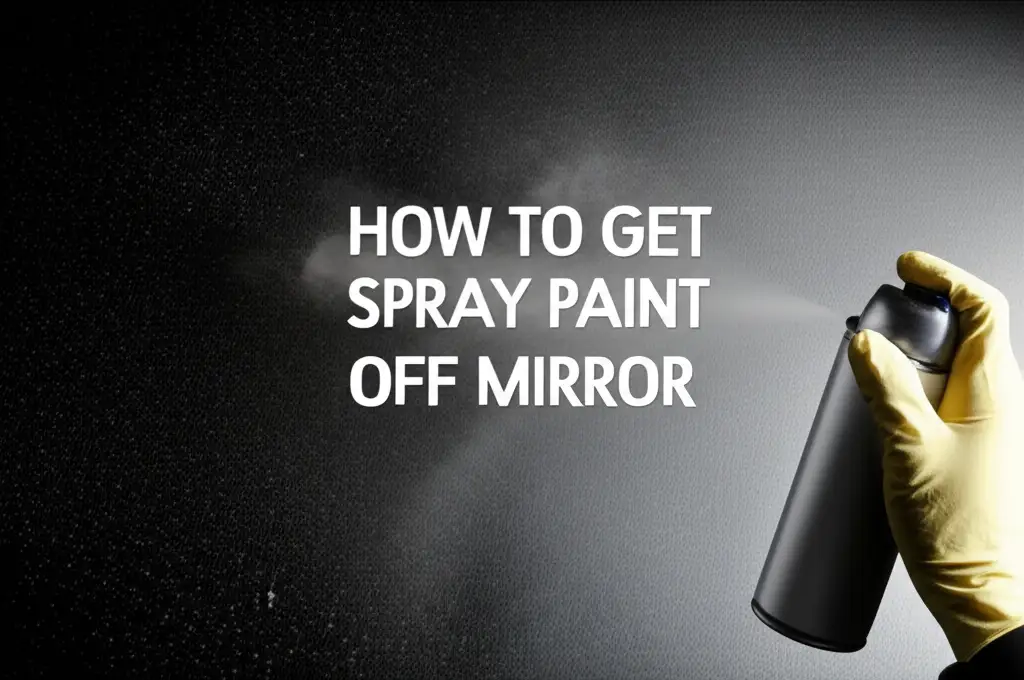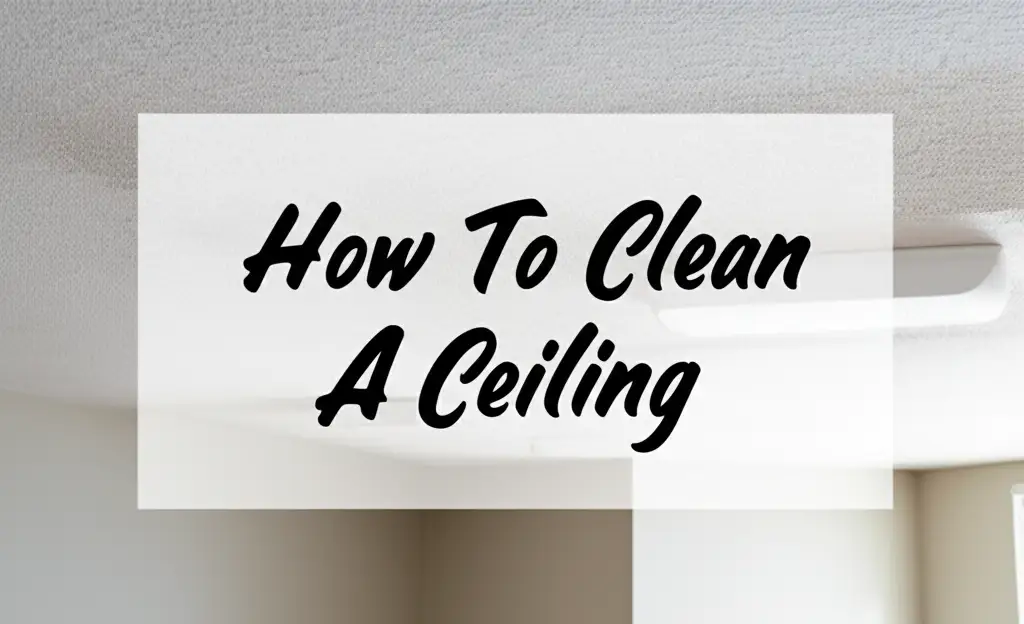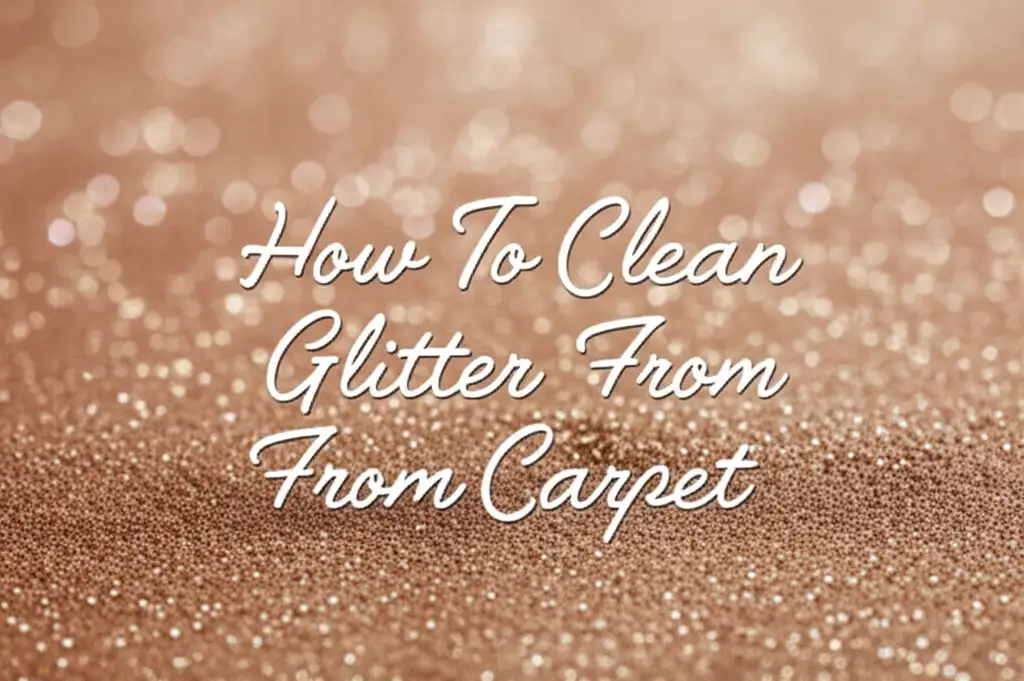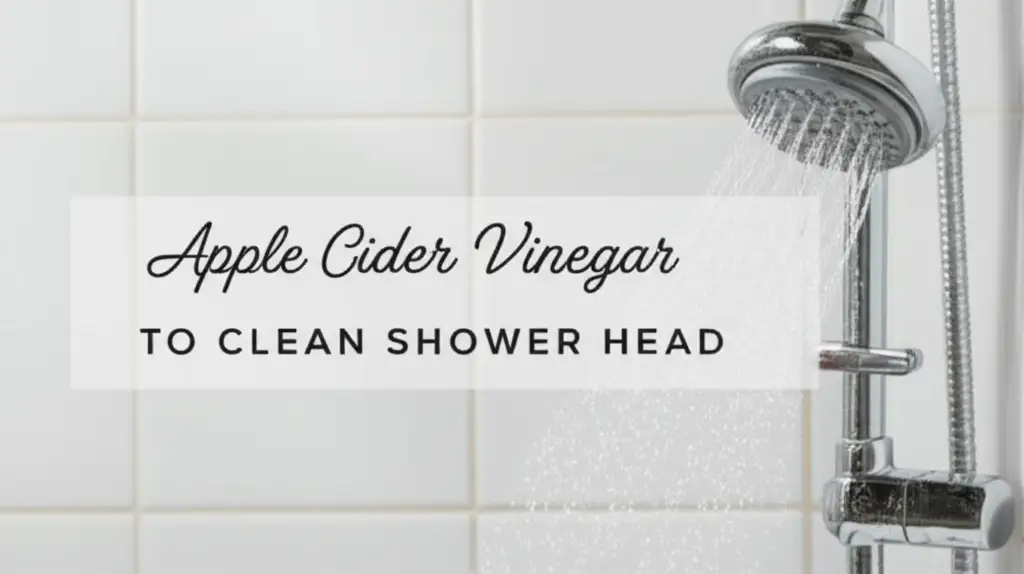· Tessa Winslow · Home Cleaning · 15 min read
How To Get Spray Paint Off Mirror

How To Get Spray Paint Off Mirror: Your Guide to Spotless Reflective Surfaces
Have you ever faced the dreaded sight of spray paint splatters on your beautiful mirror? It happens more often than you might think. Perhaps it was a DIY project gone awry, or an accidental overspray. No matter the cause, the challenge of how to get spray paint off mirror surfaces can feel quite daunting.
Don’t worry, a paint-splattered mirror does not mean your mirror is ruined. I am here to guide you through effective and safe methods to restore its pristine condition. This article will cover everything from gentle cleaning solutions to stronger solvents and mechanical removal techniques. We will also discuss essential safety precautions and preventative measures to keep your mirrors spotless in the future. Get ready to bring back your mirror’s sparkle.
Takeaway
- Assess the Damage: Determine if the paint is fresh or dried, and how much area it covers.
- Prioritize Safety: Always use gloves, eye protection, and ensure good ventilation.
- Start Gentle: Begin with mild solutions like soap and water or rubbing alcohol.
- Escalate Carefully: Move to stronger solvents like mineral spirits or acetone if needed, testing in a hidden spot first.
- Use Mechanical Aids Wisely: Employ razor blades or plastic scrapers with extreme caution and proper lubrication.
- Clean Thoroughly: Finish with a streak-free glass cleaner to restore shine.
- Prevent Future Incidents: Use painter’s tape and drop cloths during any spray painting.
To get spray paint off a mirror, start with gentle methods like rubbing alcohol or soap and water for fresh splatters. For dried paint, carefully use stronger solvents like mineral spirits or acetone, always testing first. Mechanical removal with a new razor blade can remove stubborn spots, followed by thorough cleaning to restore clarity.
Understanding the Challenge: Why Spray Paint Sticks to Mirrors
Spray paint can be a fantastic tool for many projects. However, it can also create quite a mess if it lands where it does not belong. When spray paint hits a mirror, it creates a specific cleaning challenge. This is due to the nature of both the paint and the mirror itself.
Understanding this bond helps us choose the right removal method. Spray paints contain fine pigments suspended in a binder, usually a resin or polymer. They also contain propellants that help the paint leave the can. Once the paint hits the mirror’s smooth, non-porous glass surface, solvents in the paint evaporate quickly. This leaves the paint’s resin and pigments stuck to the glass. The paint forms a strong adhesive bond as it dries. This bond can make simple wiping ineffective. Mirrors also have a delicate reflective backing. This backing can be damaged by harsh chemicals or abrasive tools that might otherwise remove paint. We need methods that break the paint’s bond without harming the mirror’s surface or its backing. Choosing the correct approach involves considering the paint type, how long it has been on the mirror, and the mirror’s construction.
Safety First: Protecting Yourself and Your Mirror
Before you begin any spray paint removal, safety must be your top priority. Working with chemicals and sharp tools carries risks. Protecting yourself and your mirror helps ensure a successful outcome. Never rush this crucial step.
First, ensure proper ventilation. Many paint removers, even mild ones, emit fumes that can be harmful. Open windows and doors, or use fans to circulate fresh air. If working indoors, consider wearing a respirator mask, especially for stronger solvents. Next, protect your hands with chemical-resistant gloves. Standard latex gloves might not offer enough protection against strong solvents. Eye protection, such as safety glasses or goggles, is also essential. This prevents accidental splashes from reaching your eyes. Finally, protect the mirror itself. Cover any frames or surrounding surfaces with painter’s tape and drop cloths. This prevents accidental contact with cleaning agents that could cause damage. Always test any cleaning solution in a small, inconspicuous area of the mirror first. This helps ensure it does not damage the glass or the reflective backing. Taking these precautions makes the paint removal process safer for everyone involved.
Starting Gentle: Mild Cleaning Agents for Fresh Splatters
When you notice spray paint on your mirror, act fast. Fresh splatters are always easier to remove than dried ones. Starting with the gentlest cleaning agents is the best approach. This prevents potential damage to your mirror’s surface. We want to avoid harsh chemicals or abrasive scrubbing if possible.
First, try warm, soapy water. Mix a few drops of mild dish soap with warm water in a spray bottle. Spray the solution generously onto the paint splatters. Let it sit for a few minutes. This helps to soften the paint. Then, gently wipe the area with a soft cloth or sponge. For light overspray, this method might be enough. If the paint does not come off, move to rubbing alcohol. Isopropyl alcohol, commonly found in medicine cabinets, is a mild solvent. It can dissolve many types of paint without harming glass. Dampen a clean cloth with rubbing alcohol. Gently rub the paint spots in a circular motion. You might need to apply a little pressure. Ensure you use a clean part of the cloth for each wipe. This prevents spreading the paint around. For general cleaning of surfaces, you might find other methods useful, such as when you clean plastic patio furniture. If these gentle methods do not fully remove the paint, do not despair. We will explore stronger options next.
Escalating the Attack: Stronger Solvents for Dried Paint
Sometimes, gentle methods are not enough. When spray paint has dried on your mirror, it forms a stronger bond. This means you need to escalate to more potent solvents. Always remember to wear your protective gear and ensure good ventilation when using these products. Test them in a small, hidden area first.
Acetone-Based Nail Polish Remover
Acetone is a powerful solvent. It can dissolve many types of paint, including most spray paints. Nail polish remover often contains acetone. Apply a small amount of acetone-based nail polish remover to a cotton ball or soft cloth. Gently dab the paint splatter. Do not rub vigorously at first. Let the acetone sit on the paint for a few seconds. This allows it to break down the paint’s bond. Then, gently wipe away the softened paint. If you are worried about the mirror’s backing, try to keep the acetone away from the edges. Also, avoid letting it pool on the glass. Acetone evaporates quickly, but prolonged contact can affect certain mirror backings.
Mineral Spirits or Paint Thinner
For particularly stubborn or older dried paint, mineral spirits or paint thinner can be effective. These products are stronger solvents. They work by dissolving the paint resins. Apply a small amount of mineral spirits or paint thinner to a clean cloth. Again, gently dab the paint. Give it a moment to work. Then, wipe with light pressure. You may need to repeat this process several times. Use clean sections of the cloth for each pass. Never pour these solvents directly onto the mirror. This can cause unnecessary spreading and potential harm. Always follow the manufacturer’s instructions on the product label. After using these solvents, always clean the mirror with a standard glass cleaner to remove any residue. Different types of paint stains require different cleaning methods, just like knowing what gets paint out of carpet needs specific approaches for fabric.
The Precision Approach: Mechanical Removal Tools
When chemical solvents do not fully remove the spray paint, mechanical removal becomes an option. This method uses tools to scrape the paint off the mirror surface. It requires extreme caution and a steady hand. The goal is to remove paint without scratching the delicate glass.
Using a Razor Blade or Scraper
A new, single-edge razor blade or a dedicated glass scraper can be very effective. This method works by carefully lifting the dried paint off the surface. First, ensure the mirror surface is clean and free of dust. You can spray the mirror with soapy water or glass cleaner first. This acts as a lubricant. Hold the razor blade at a very shallow angle, almost flat against the glass. An angle of about 10 to 15 degrees is ideal. Gently push the blade under the paint splatter. Use short, controlled strokes. Do not press too hard. Let the sharpness of the blade do the work. If you hear a scratching sound, stop immediately. Your angle might be too steep. Repeat this process until the paint lifts. Always scrape in one direction. Wipe away paint debris as you go.
Plastic Scrapers for Safer Options
For those nervous about using a metal razor blade, a plastic scraper offers a safer alternative. These tools are less likely to scratch the glass. However, they require more effort. They work best on fresh or slightly softened paint. You can use plastic scrapers found in hardware stores. These often come with scraper kits for delicate surfaces. Apply the same lubrication technique with soapy water. Hold the plastic scraper at a shallow angle. Push gently to lift the paint. This method might require more passes. It is a good choice for smaller areas or lighter splatters. After using any mechanical tool, clean the mirror thoroughly with a glass cleaner to remove any remaining residue and restore its shine. Keeping surfaces clean extends to many areas of your home, including how you clean a ceiling or other hard-to-reach spots.
Natural Alternatives and Household Hacks
While commercial solvents and mechanical methods are often most effective for spray paint, some natural alternatives can sometimes help. These methods are generally milder. They are worth trying for very fresh or light overspray before resorting to stronger chemicals. Always remember that results vary based on the type of paint and how long it has been on the mirror.
Vinegar and Baking Soda
White vinegar is a common household cleaner. It has mild acidic properties. These properties can help to loosen some types of paint. Dampen a soft cloth with white vinegar. Lay it over the paint splatter. Let it sit for 5-10 minutes. This gives the vinegar time to work on the paint. Then, try to gently rub the paint away. For more stubborn spots, you can make a paste with baking soda and water. Mix a small amount of baking soda with just enough water to form a thick paste. Apply this paste directly onto the paint. Let it sit for a few minutes. The mild abrasive quality of baking soda, combined with the softening effect, might help. Gently scrub with a soft cloth or non-abrasive sponge. Rinse the area well afterwards. Be careful not to press too hard, as baking soda can cause fine scratches if rubbed too aggressively on glass.
Rubbing Alcohol Revisited
While mentioned earlier as a gentle start, rubbing alcohol (isopropyl alcohol) can also be considered a natural-ish alternative. It is less harsh than paint thinners but more effective than soap and water for many paint types. If initial attempts with plain soap and water failed, giving rubbing alcohol another try with a bit more soak time can be beneficial. It is often effective on acrylic-based spray paints. Simply soak a cotton pad or cloth and let it sit on the paint for a minute or two before wiping firmly. Remember, these natural methods might not be powerful enough for very stubborn or cured spray paint, but they are always a good starting point to prevent using harsher chemicals unnecessarily.
Restoring the Shine: Post-Removal Mirror Care
After successfully removing the spray paint, your mirror might still look dull or have streaks. This is normal. Residue from cleaning agents or dissolved paint can cling to the glass. The final step is to restore your mirror’s crystal-clear shine. This requires proper post-cleaning care.
First, thoroughly rinse the area where you removed the paint. You can use a clean cloth dampened with plain water. This removes any lingering chemical residue. Be gentle. Avoid letting water seep behind the mirror if possible. Next, it is time for a good quality glass cleaner. Spray a generous amount of glass cleaner onto the entire mirror surface. Use a microfiber cloth for wiping. Microfiber cloths are excellent for streak-free cleaning. Wipe in a consistent pattern, either up and down or in small circles. Avoid paper towels, as they can leave lint or scratch the glass. For an extra streak-free finish, buff the mirror with a second, dry microfiber cloth. You can also use crumpled newspaper. The ink in newspaper helps absorb moisture and polish the glass without leaving streaks. This final buffing step makes a big difference. It brings back the mirror’s true reflective quality. Your mirror will look brand new again.
Prevention is Paramount: Avoiding Future Accidents
Removing spray paint from a mirror can be a time-consuming and careful process. The best way to deal with spray paint on your mirror is to prevent it from happening in the first place. A little foresight and preparation can save you a lot of effort and potential frustration. Think of it like taking steps to clean air vents regularly to prevent dust buildup; prevention makes cleaning easier.
Whenever you use spray paint near a mirror, take protective measures. Your mirror is a valuable item, and protecting it is simple. Here are some key prevention tips:
- Cover the Mirror Completely: This is the most important step. Use large plastic sheeting or old newspapers to cover the entire mirror surface. Secure the sheeting with painter’s tape around the edges. Make sure there are no gaps for overspray to sneak through. Painter’s tape sticks well but removes cleanly without damaging surfaces.
- Use Drop Cloths: Extend your protection beyond just the mirror. Lay down drop cloths on the floor and any furniture around the mirror. Spray paint overspray travels further than you think. Drop cloths catch any airborne paint particles. This protects your floors and furniture from accidental splatters.
- Work in a Well-Ventilated Area: While not directly preventing paint on the mirror, good ventilation helps reduce the amount of airborne paint particles in the general area. This reduces the chances of them settling on unintended surfaces like your mirror.
- Spray Away from the Mirror: When painting, always direct the spray can away from the mirror. Even with coverings, this reduces the risk of heavy overspray. If possible, remove the mirror from the room entirely before painting. This eliminates any risk.
- Control Your Spray: Learn to use the spray can effectively. Use steady, even strokes. Do not oversaturate the area you are painting. This minimizes excess paint mist. Practicing on a piece of scrap cardboard beforehand can help you get a feel for the spray pattern.
By following these simple preventative measures, you can enjoy your spray painting projects without the added worry of cleaning up accidental mirror splatters. A little preparation goes a long way in keeping your home clean and protected.
FAQ Section
Q1: Can I use paint thinner on a mirror?
Yes, you can use paint thinner or mineral spirits on a mirror. Always apply a small amount to a clean cloth first. Dab the paint gently, do not pour it directly. Ensure good ventilation. Test in an inconspicuous area of the mirror first. Clean the mirror with glass cleaner afterward to remove any residue.
Q2: Will acetone damage my mirror?
Acetone, found in nail polish remover, can remove spray paint. However, use it carefully. It can potentially damage the mirror’s silvered backing if it seeps behind the glass or stays on the surface for too long. Apply a small amount to a cotton ball, dab the paint, and wipe quickly.
Q3: How do I remove spray paint without scratching the mirror?
To avoid scratches, always start with the gentlest methods like soap and water or rubbing alcohol. If using a razor blade or scraper, ensure it is brand new and hold it at a very shallow angle (10-15 degrees). Lubricate the surface with soapy water or glass cleaner first. Use light pressure.
Q4: What if the spray paint on my mirror is very old and dried?
For very old and dried spray paint, you will likely need stronger methods. Start with solvents like mineral spirits or paint thinner. If solvents are not enough, carefully use a new razor blade or a plastic scraper. Patience and repeated applications are key. Always test methods in a hidden spot first.
Q5: Are there any specific commercial products for mirror paint removal?
Yes, some commercial paint removers are formulated for glass. Look for products designed to remove paint from non-porous surfaces. Always read product labels carefully. Ensure they are safe for glass and follow all instructions, paying attention to ventilation and protective gear recommendations.
Q6: Can I use steel wool to remove spray paint from a mirror?
No, I do not recommend using steel wool on a mirror. Even fine steel wool can scratch the delicate glass surface. It can also damage the mirror’s reflective backing. Stick to softer cloths, plastic scrapers, or new, single-edge razor blades used with extreme caution and proper lubrication.
Conclusion
Finding spray paint on your mirror can be a disheartening experience, but now you know how to get spray paint off mirror surfaces effectively. We have explored a range of solutions, from simple soap and water for fresh splatters to powerful solvents and precise mechanical tools for dried-on paint. Remember, the key to success lies in assessing the paint’s age, prioritizing safety with proper ventilation and protective gear, and always starting with the gentlest method before escalating.
Whether you choose rubbing alcohol, mineral spirits, or carefully wield a razor blade, patience and a steady hand will lead to a spotless reflection. Do not forget the importance of proper post-cleaning care to restore your mirror’s streak-free shine. More importantly, implement preventative measures like covering surfaces and using drop cloths during any spray painting projects. By following these steps, you can confidently tackle any accidental paint marks. You will keep your mirrors looking their best. Reclaim your mirror’s pristine look today!
- spray paint removal
- mirror cleaning
- how to clean mirror
- paint stains
- DIY cleaning
- glass cleaning
- home maintenance





